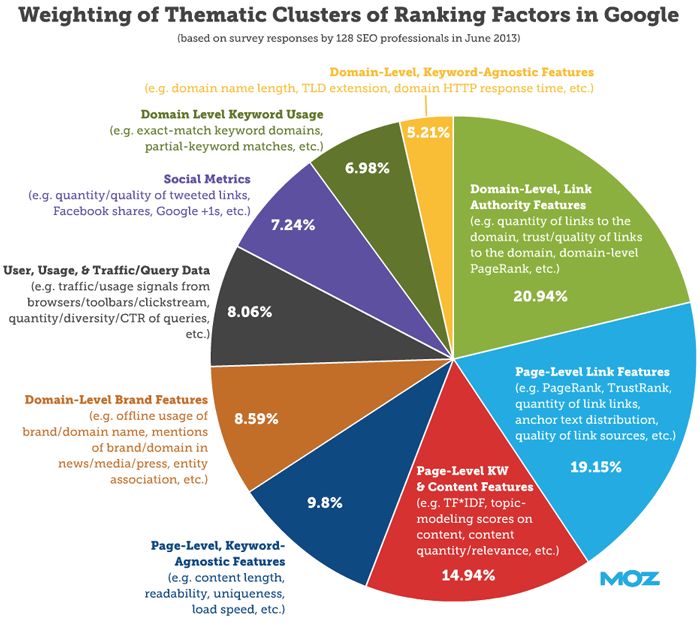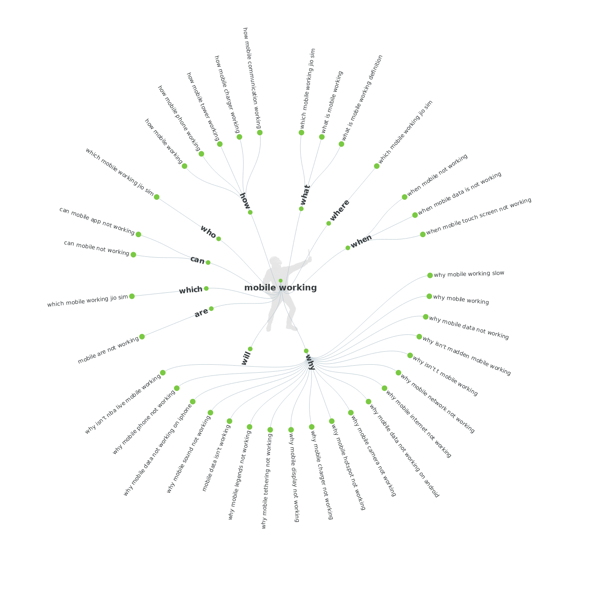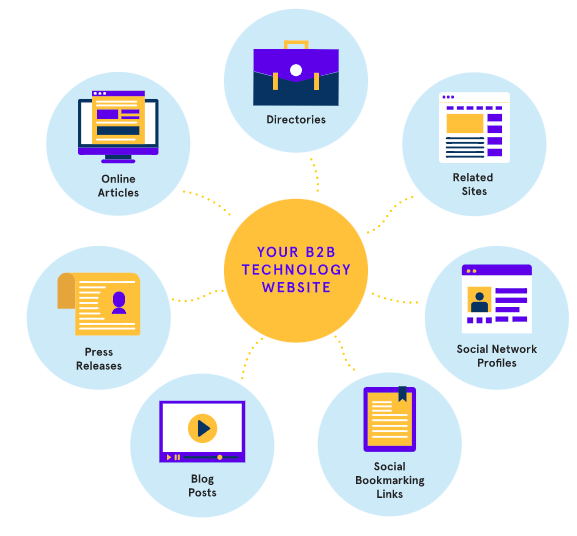Every second, an average of 67,000 searches are tapped into Google. So many people are looking for an answer, it's up to you to be there to give them the answer. What will SEO in 2021 look like? We list all the do's for this year.
Google looks primarily at how authoritative a piece of content is. Authority is determined by many factors: In the chart below, you can see to what extent which factors influence it.

(Source: moz.com)
Well-written and substantive content is a must-have to begin with. The content should provide an in-depth understanding of your topic.
This is called a pillar page. The title of this page should be catchy. Think of: "The ultimate handbook to...."
If you don't attract readers already with the title, how do you expect to do it with the content?
It is important that you make the pillar page as dynamic as possible. You do this by using infographics, charts, mini guides and quotes, for example.
A good pillar page includes:
Improve your SEO game with strong visuals and deep research. These are your new best friends, instead of a piece of text. Decorate the text with visualizations, statistics and diagrams about your product/service.
Maybe you already have a lot of content lying around and published. Take a look at your website and ask yourself: Which page or content performs best?
How can you make pages and blogs even better?
The goal is to create valuable content that others cannot resist sharing.
Most people today have even less concentration than a goldfish. Yes, it's worse than you think. We can no longer sit still and focus on one thing at a time. We live in a world full of distractions....
Are you still here?
Is this recognizable?
How many times have you been distracted while reading this blog?
How many times have you glanced at your phone?
Because of the distraction, no one is actually really reading. Everyone is looking...
For this reason, video content already had a big role within SEO in 2020 - especially in the B2B marketing world. Tutorials, product releases and presentations are all important pieces of content that you can place on your website to attract website traffic.
Without video, your website is flat, boring and less personal. Hardly anyone will remember your website... Do yourself a favor and create video content once to discover what it does for your website.
Keywords, of course, remain incredibly important when it comes to SEO. With these, you determine what you want to be found on.
So, first things first:
A keyword research project, where do you start?
Type your topic into Google and other search engines to see what kind of results you get next. This is a good starting point. You will find out what others are saying about the same topic. You will also see what the top rankers are doing to achieve their top positions.
SEO guru Neil Patel recommends stealing your competitors' idea and then doing it just a little bit better. Why would you want to reinvent the wheel? Google gave them top rankings for a reason, so they are doing something right. This is exactly what you will do too, but better.
Google was built to answer questions. Just as your business is "built" to solve a problem or need for a customer. As a result, you understand what your target audience is asking for. AnswerThePublic is the ultimate tool to use for this purpose.

Now take a look at the example: mobile working. This is the result you get when you put this keyword into this tool. You get to see which questions the target audience is asking and which are relevant for you to answer. Based on these questions, you can also determine your keywords.
Prioritize your keywords based on the following factors and compile a list:
Now that you have a list of your most important keywords to rank for, it's time to run it through Google. You can then see what is being written about. That way, you can come up with attractive titles that will grab attention and score you a good position in Google.
Local SEO is ideal for any marketer. By rewriting content to your local area, you are no longer fishing in an immense pond. Yes, your target audience is getting smaller. But you now stand head and shoulders above the competition.
- Correct name and address details; It is important that your company's name and address details are consistent on the website. Google doesn't like inaccuracies, so make sure the same information is everywhere.
- Google My Business; A Google My Business account allows you to be found locally. This account connects Google Search, Maps, Reviews and Google Analytics in one convenient application.
- Collect reviews; When it comes to SEO, everything is a popularity contest. Reviews are more important now than ever. A whopping 93% of consumers say their purchasing decision is influenced by online reviews.
So people who buy your products or services have the power to make or break your local SEO. The most important places to get reviews are on Google and Facebook. Don't your customers leave reviews yet? Then you can always ask for them.
What do we mean by Technical SEO?
The features and plugins implemented on the website and server to maximize website usability, crawling and indexing by search engines.
In other words, technical attention and control are needed for Google algorithms. Otherwise, they cannot effectively read and index your blog, page or pillar page.
This may sound simple, but there are many aspects to consider.
For example:
You can take care of these aspects yourself, or you can let your web builder take care of the technical SEO side.
A well-functioning website affects your ranking in Google. Therefore, not only textual SEO is important, but also these technical SEO aspects.
What is link building?
Link building is the exchange of links with other websites in hopes of increasing the success of your SEO and domain authority.
There are several places to get backlinks:

72% of SEO professionals believe backlinks are an important ranking factor. It is a very effective part of your SEO strategy. However, link building techniques can be very time consuming. Smaller organizations do not always have the resources to experiment with backlinking.
Therefore, it is more interesting to look at what techniques do fit within your skills and budget. It is also important to know that it is better to have a few high authority backlinks than hundreds of low authority websites.
If you are writing content to increase your ranking in Google, keywords are only part of this great adventure. The style, structure and even the tone in your texts can affect how your content ranks.
No one knows for sure how Google's algorithms work. We do know what their mission is:
'To organize the world's information and make it universally accessible and useful'
This does allow us to speculate what Google rates as valuable content:
- Organized: Google likes it when everything is neat. The search engine prefers well-ordered and nicely labeled content.
-Accessible: Google wants to give its users the best results quickly. Therefore, it is important that Google immediately understands what your content is about.
- Useful: Since Google has become advanced, the relevance of content is also more important. Google understands exactly what users are looking for. Even if a user himself does not quite know that yet. This is simply because of the context of the search query.
One of the things Google really understands is how people process their information online. But also how different the experience is when reading offline. Online content can be incredibly powerful, but you have to be realistic about how readers process information.
Simply put, we are a generation of skim-reading.
There is a surplus of information available. In a "now, now, now" culture, people don't have the patience to read unnecessary details.
Indeed:
I hear you thinking....
"If nobody takes the time to fully read my content anyway, what's the point of writing?"
So should you stop?
Absolutely not.
Remember that blogging is effective:
Stop testing your readers' patience. Don't write chunks of text. Optimize your content for skim readers.
As the average reader's attention span decreases, it pays to structure the text. This way, you can lower your bounce rate and increase SEO.
How do you do that?
- Write an effective introduction:
Structure your content and create the F-shape to get a skim-reader's attention. This means making the moral of your story clear already in the introduction. Then complement the story with eye-catching headlines throughout your blog.
The introduction is the most important part of your blog. The average reader spends 80% of his/her time on information above the "fold." That's why the introduction is so important. Make your intro strong enough and convince the reader to scroll through.
A good introduction:
An introduction is ideal for attracting attention. But a snappy opening paragraph, with your focus keyword, is an excellent way to improve your SEO. The sooner you show Google what your blog is about, the better. It is important to make sure your keyword comes first.
Make your paragraphs clear, too. Start each paragraph with the most important statement. Since readers are scanning your content, it's important to get straight to the point. That way, if they skip content, you make sure they still get the most important information and value from your blow.
- Readable content:
A good blog is easy to read and provides value even when scanned. It is critical that your content be concise and simple.
Try these tips to make your content a quick read:
- Make use of white space
Blogs with lots of white space read much more pleasantly. Studies have themselves shown that page layout affects reader satisfaction.
Use these tips to create more white space:
- Tone of voice
A clear picture of your target audience is very important for effective SEO copywriting. Do research so you can be sure you are using words your customers understand, use and search for.
The end of SEO in 2021. It's quite a bit of information to take in. We hope you get something out of it and your blogs will soon appear at the top of Google!
Need help with SEO in 2021 or with content marketing? Then get in touch with us!